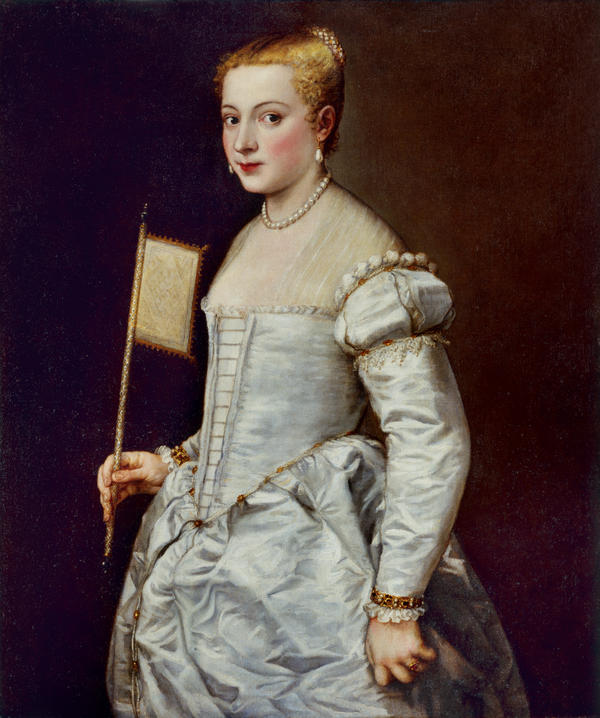 |
 |
| This bodice pattern, on top of the one I cut it down from. See the difference? |
First I basted together the lining and interlining along the bottom and sides. Then I added boning channels, three on each front panel and three on the back, and inserted the plastic bones. Next time, I'll probably bone the front a little more heavily, but this works well enough. I'll probably also have two layers of interlining, one canvas and one linen, next time. I didn't this time because I was afraid I'd run out of fabric, and this dress isn't meant to be formal anyway, so it really doesn't matter what the inside looks like.
 |
| Adding the lacing ribbons. Next time, I'll add another layer of lining so the boning channels aren't visible. |
Once the bones were inserted, I attached the ribbons the lacing goes through, stitching the ribbon down every inch or so and making sure the openings for the laces are directly across from each other. This is a technique for ladder lacing that's all over the internet, and it works well, but I'm not sure of its historical authenticity. I may use lacing rings next time, as I think they would be sturdier and easier to lace up.
 |
| It fits! |
Next, I tried on the bodice and it fit! Yay! Time to cut out the fashion fabric!
I cut the blue linen out with a wide seam allowance, pinned it to the outside of the bodice, made sure there were no wrinkles, and folded the raw edges under while pinning it to the inside, clipping along the curves as needed. Then I whip stitched the blue fabric down making sure to catch the canvas interlining but not go all the way through and leave visible stitches. Finally, I pinned the bodice pieces right sides together and back stitched everything together. Bodice is done!
 |
| Stitching the blue fashion fabric to the lining. |
Then I laid one of my panels over the lining fabric to cut that out the same way, and realized that my lining fabric was only 54" wide. Oops... So I made a third, smaller panel for the lining, which worked, but looks a little silly. Oh well, no one is looking at my dress lining, right?
 |
| Gathering the skirt to the bodice. |
The last step was to gather the skirt to the bodice, which I did by gathering half the skirt at a time and pinning it to the bodice, right sides together, then whip stitching the two together, making sure to catch the canvas interlining as often as possible, and making 2-4 stitches per pleat.
Dress is done! Now time for sleeves!
I made a pair of sleeves a while ago that turned out to be a little too big, so I tried those on, figured out how much I needed to adjust the pattern by, and made a mock-up.
 |
| Finished sleeve! If you look closely, you can see where the lining started to fray when I flipped it right side out, but I don't think people will notice when I'm wearing it. |
Finally, I just had to attach the ribbon ties to the sleeves and make eyelets in the shoulders of the dress to lace them through. Done!
And then I tried the dress on to take pictures, and discovered that I had made a mistake on the skirt. This is a V-shaped bodice, so I should have shaped the top of the front panel to compensate for the bodice length, but I didn't. The difference in length was noticeable, and the front hem was dragging on the ground a little, so I had to fix it. I had two choices: either fix the skirt at the top by undoing the pleating, hem, and front opening, or fix it at the bottom by ripping out the seam between the fashion fabric and the lining and hemming all the way around.
I went with the second option. I ripped out the bottom seam, pinned the hem at the correct length, and trimmed a little off the front. Then I folded the raw edges in and used an invisible hem stitch all the way around. All better!
 |
| The hem lengths match! Yay! |
I know this dress started out as an overdone mock-up, but I really love how it turned out! It's honestly one of my favorite things I've made yet. I will definitely be wearing it a lot, if we're allowed to have events for me to wear it to this summer!










